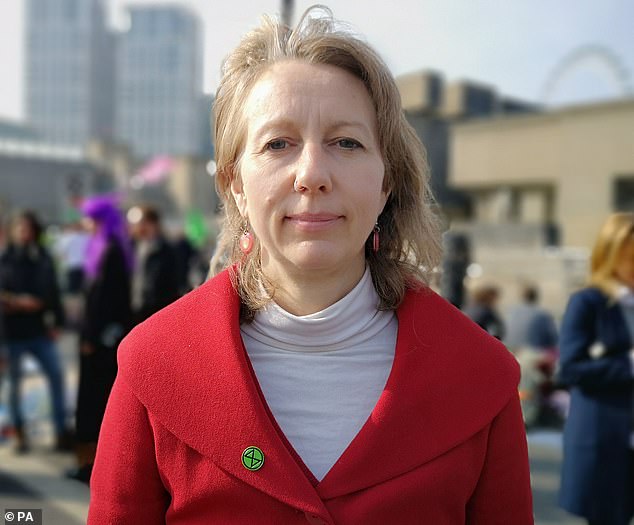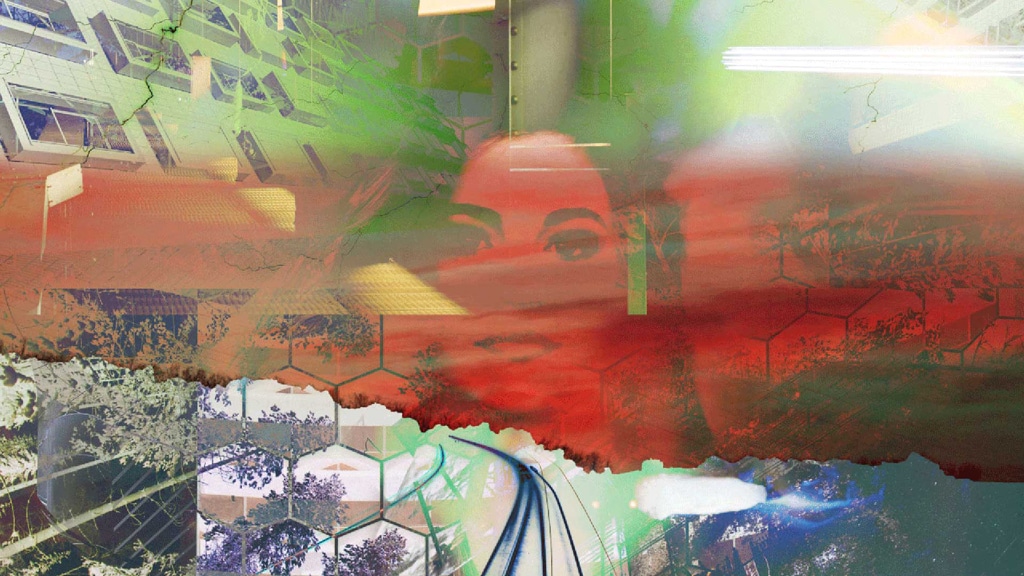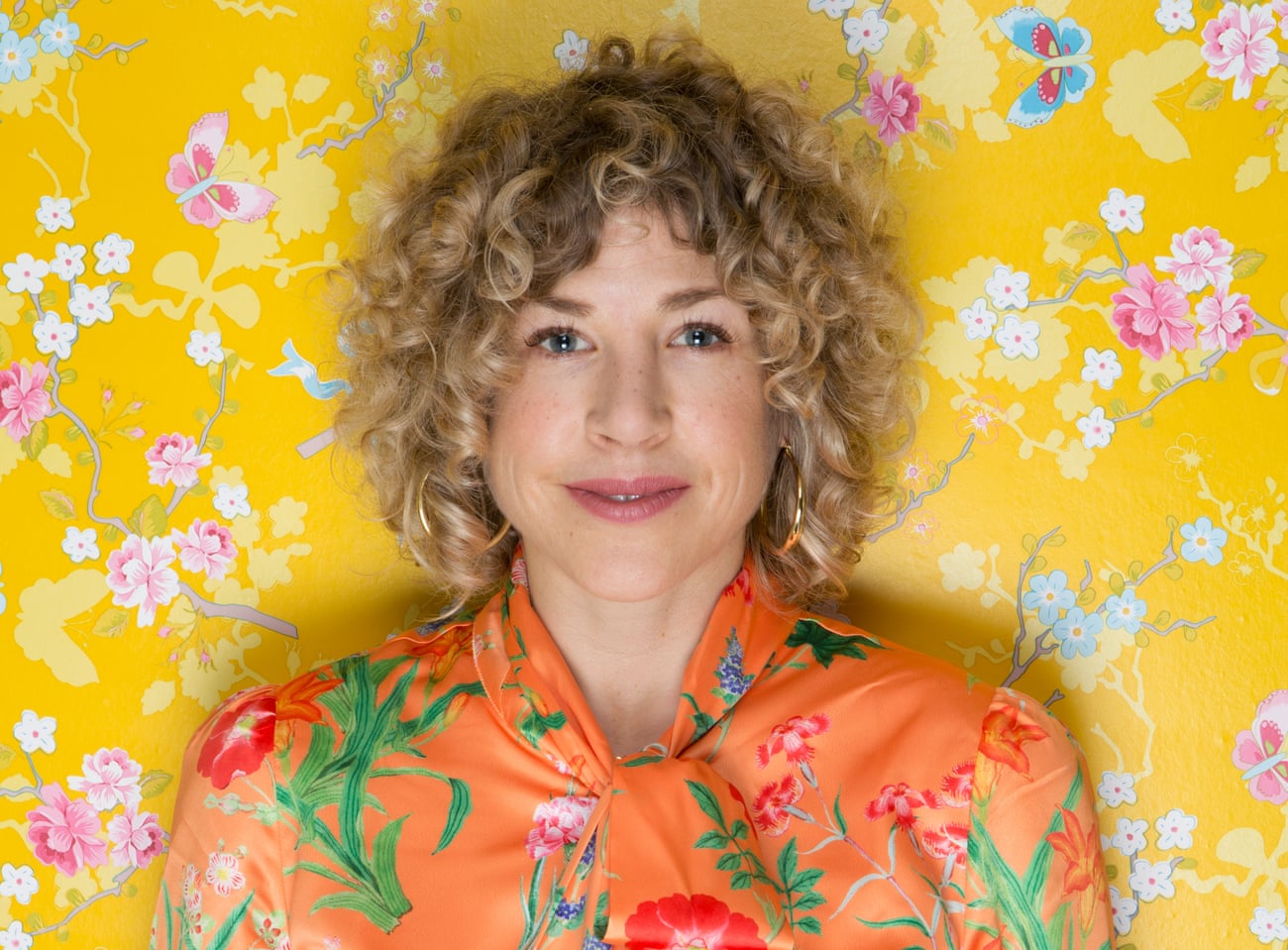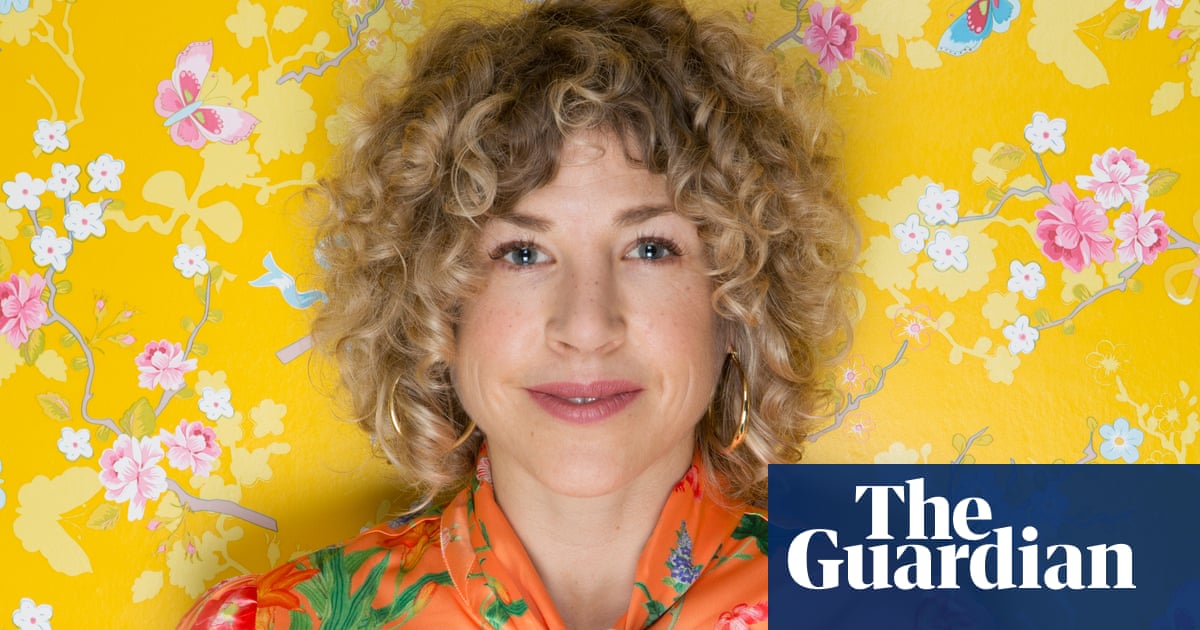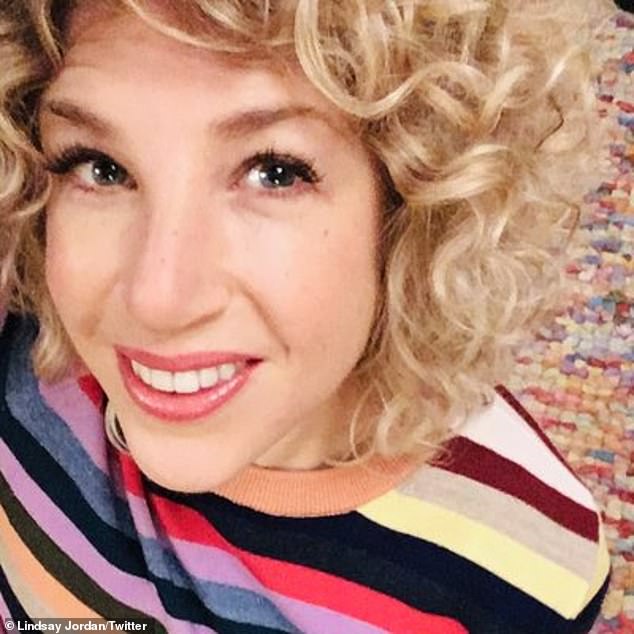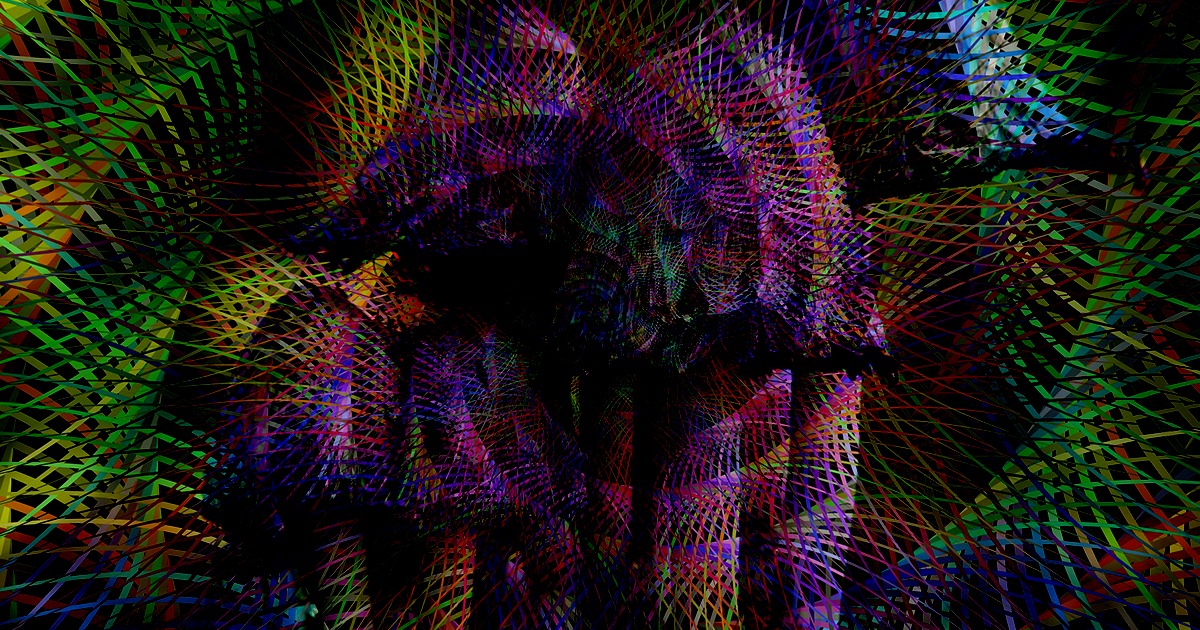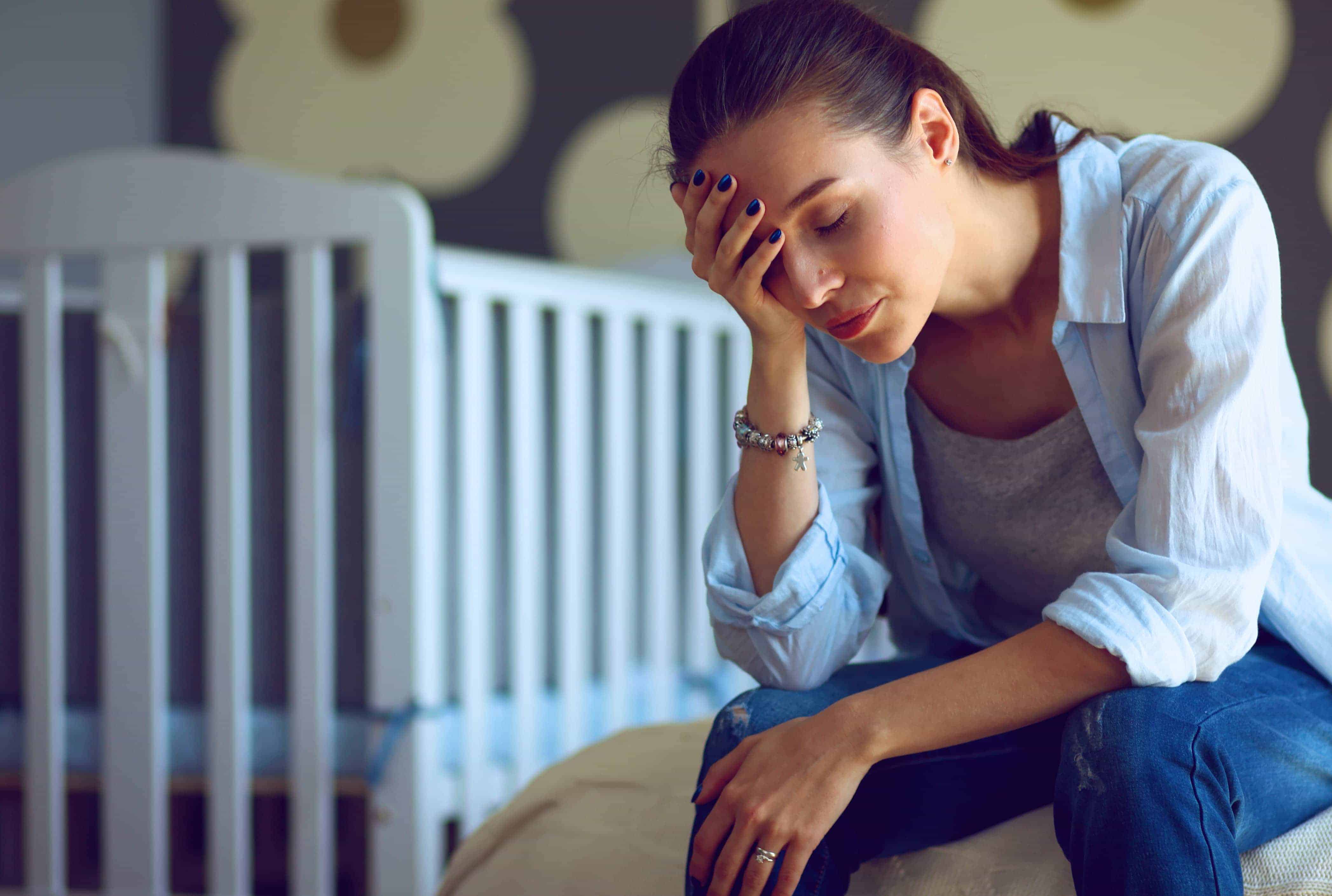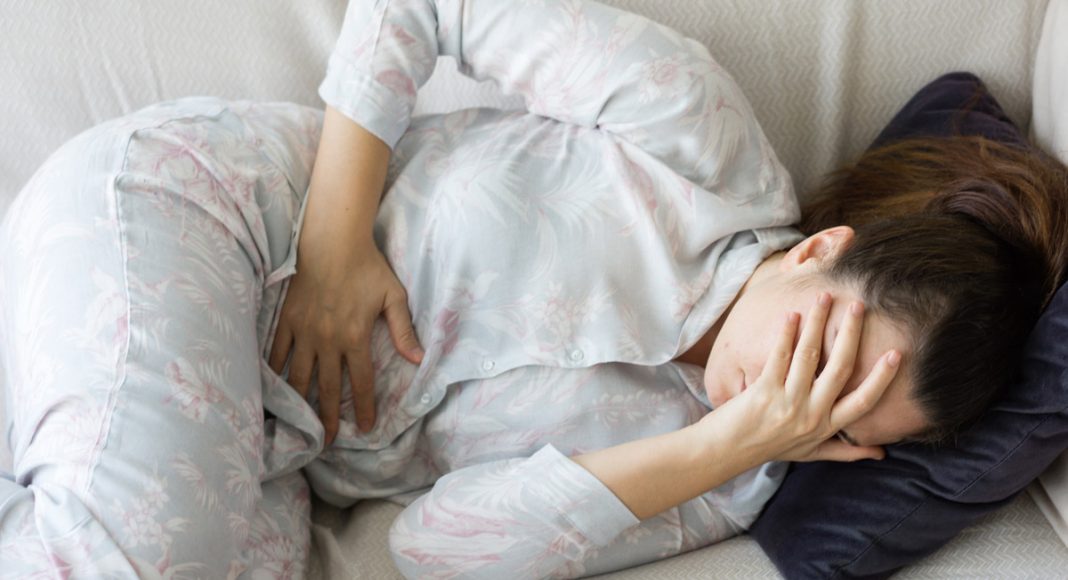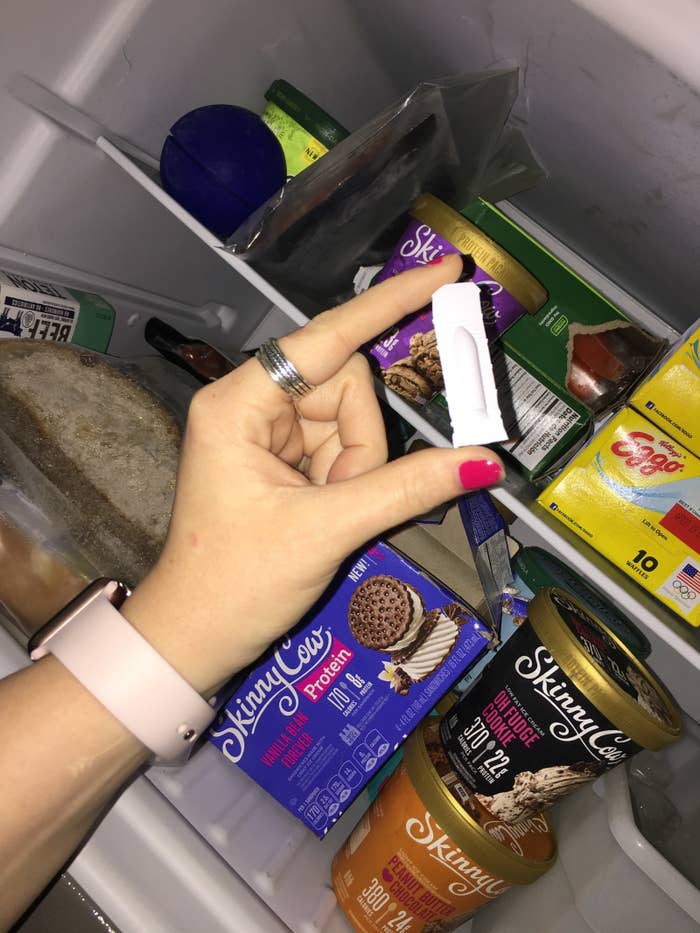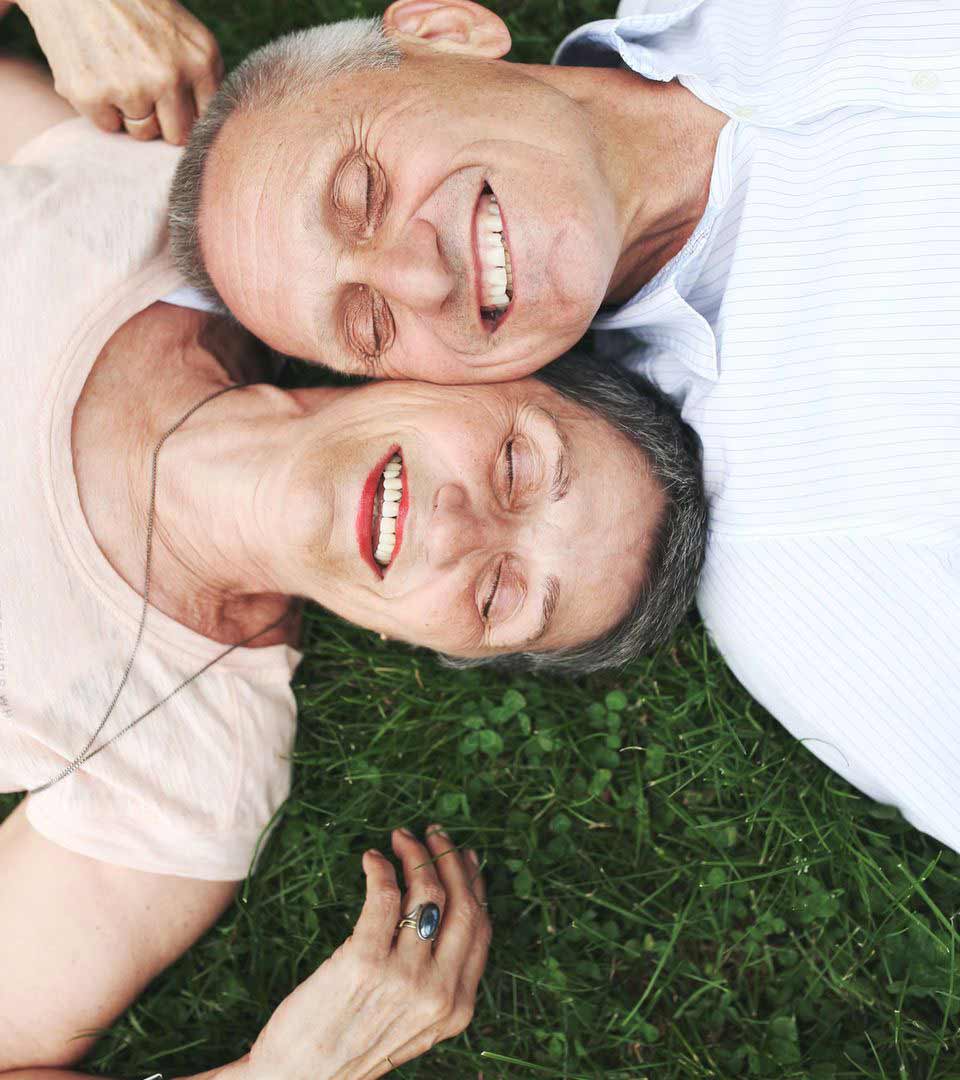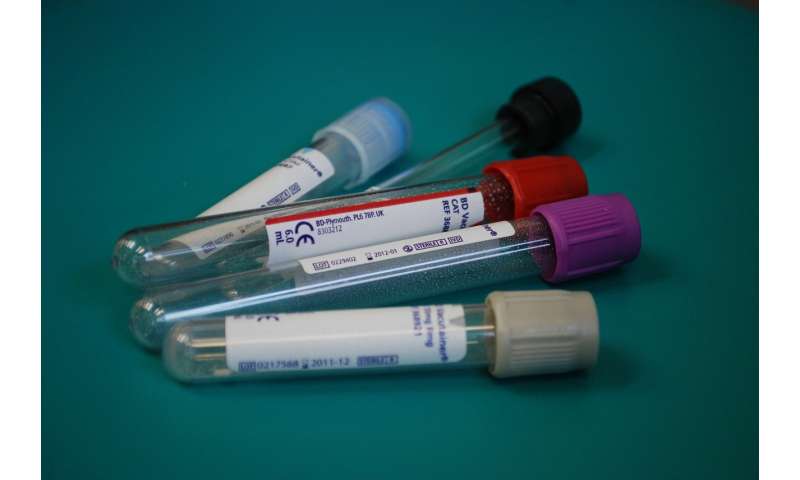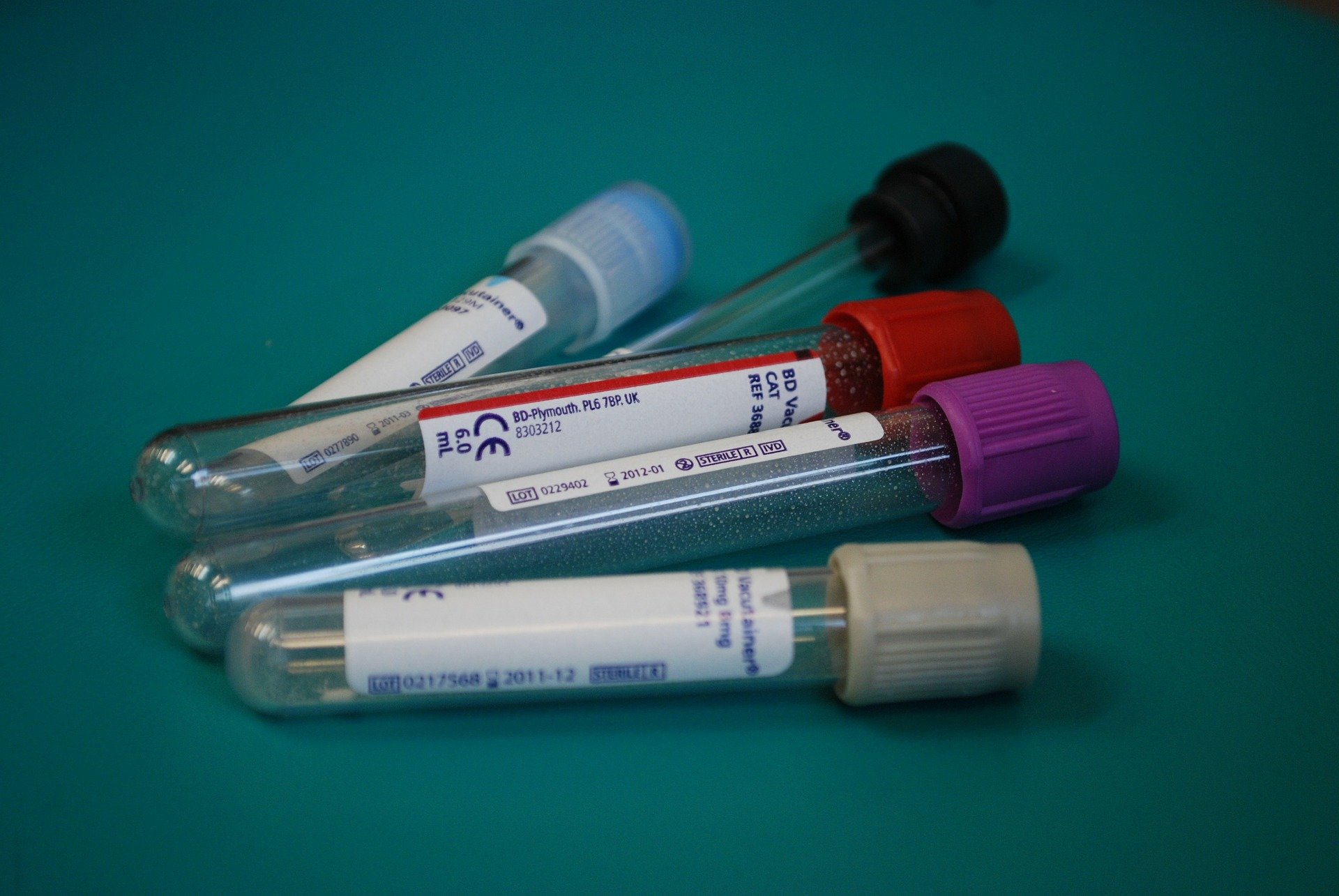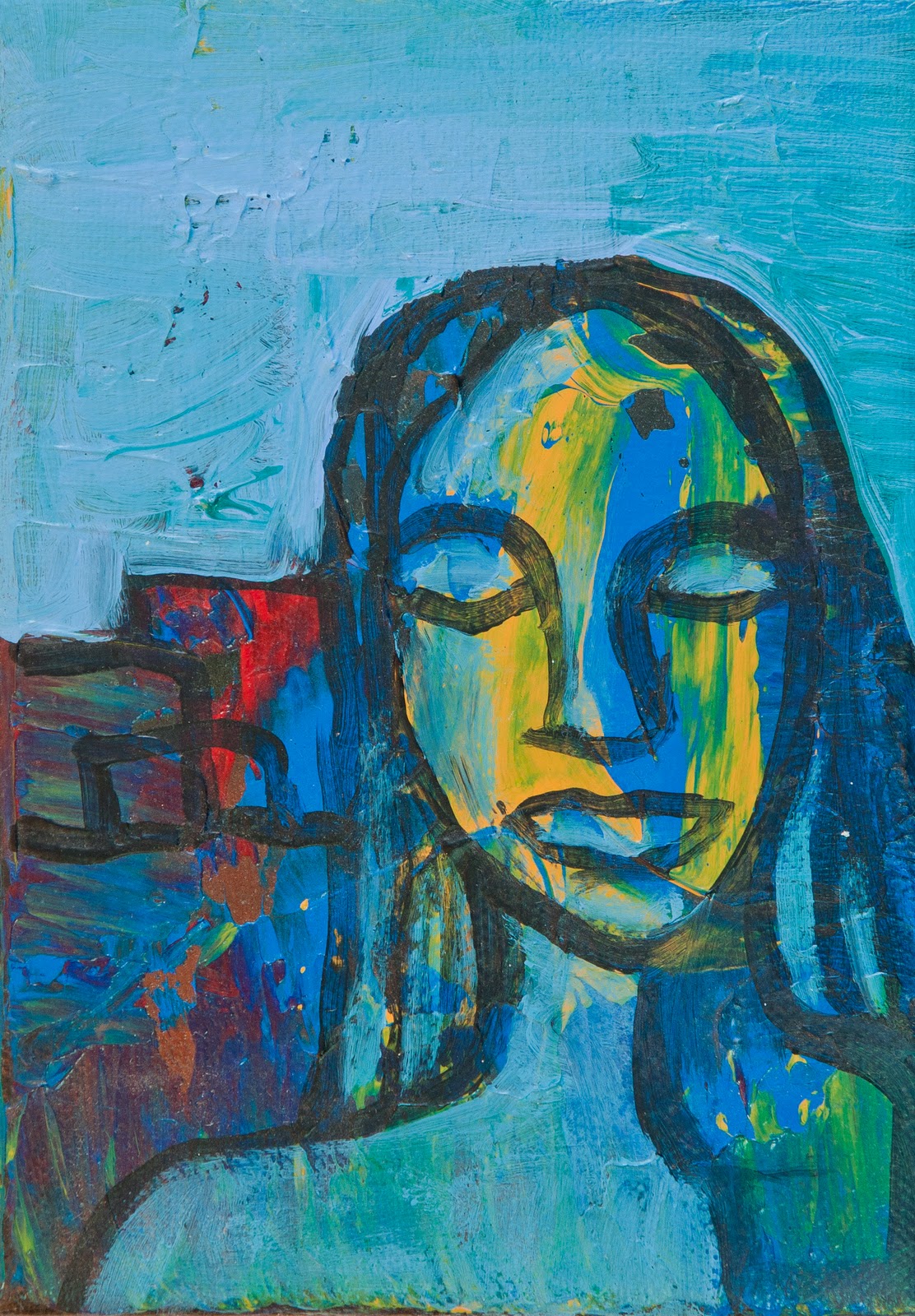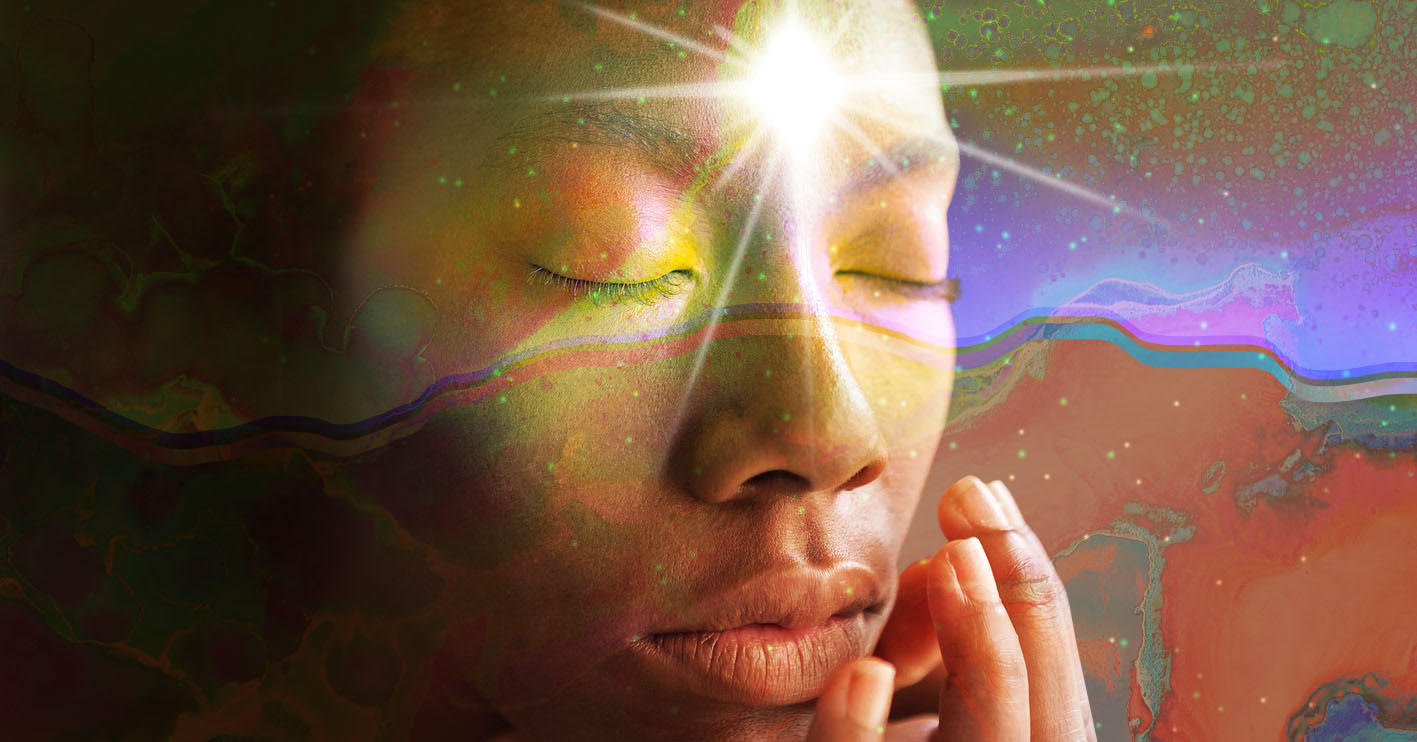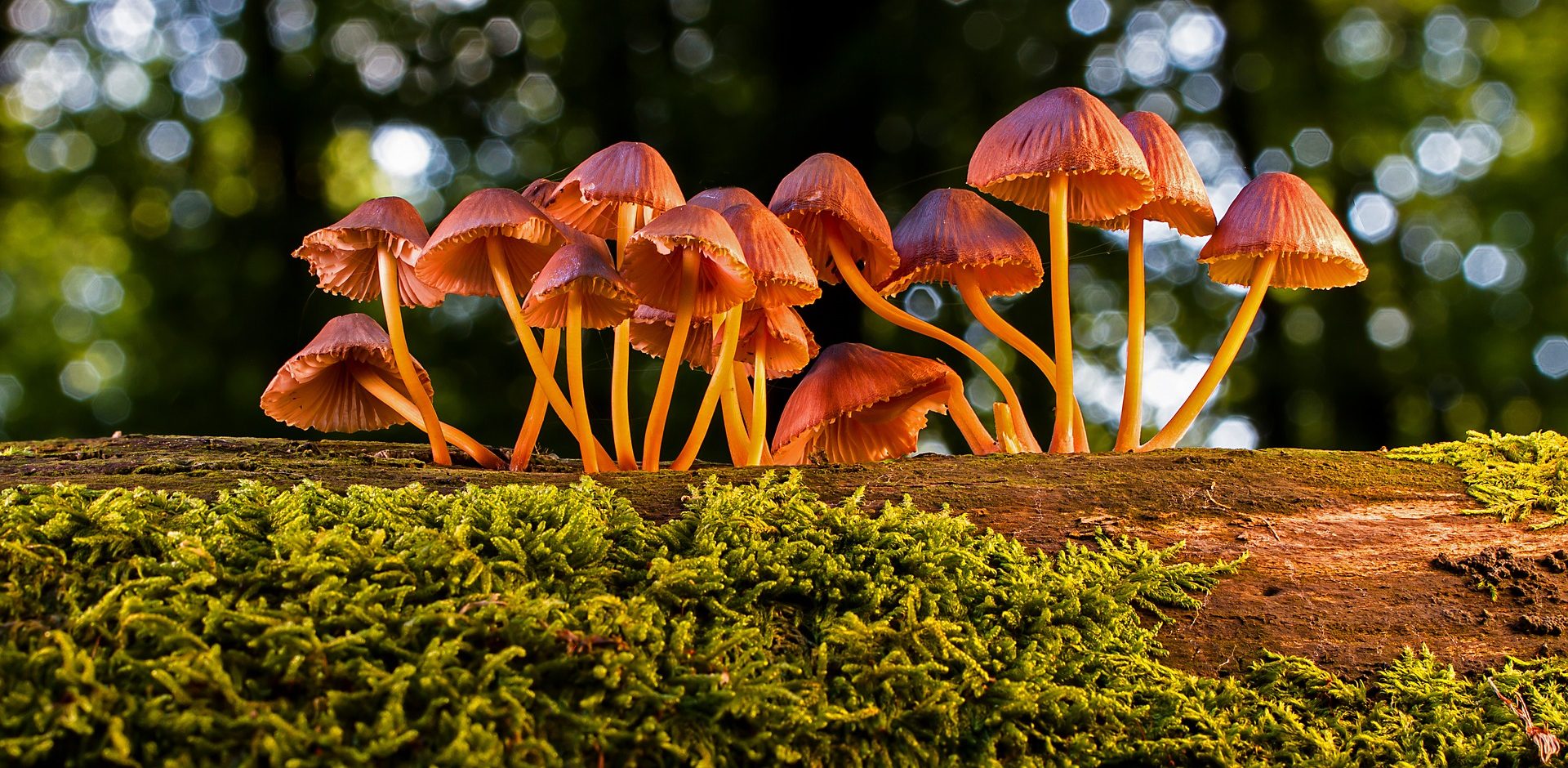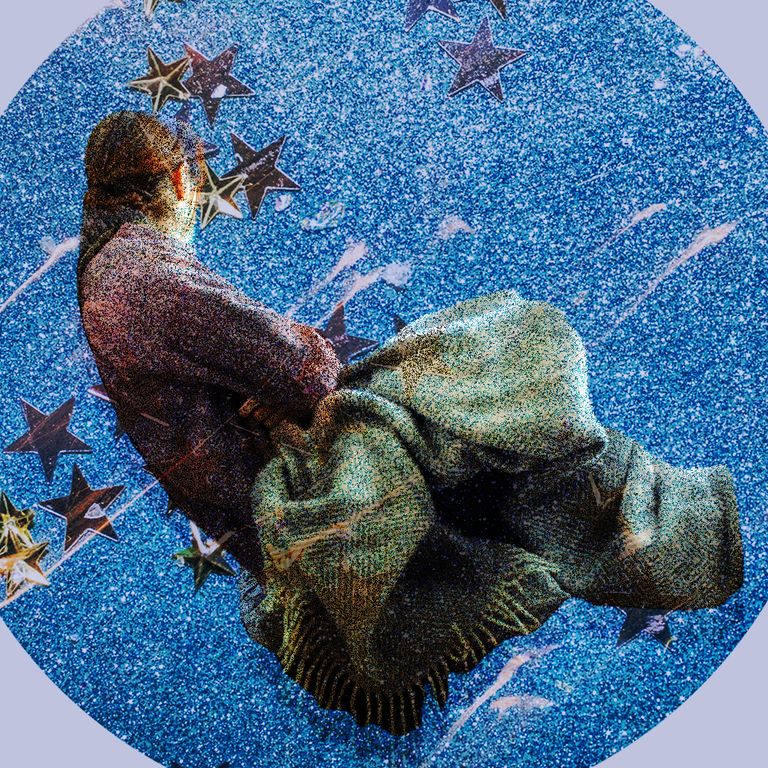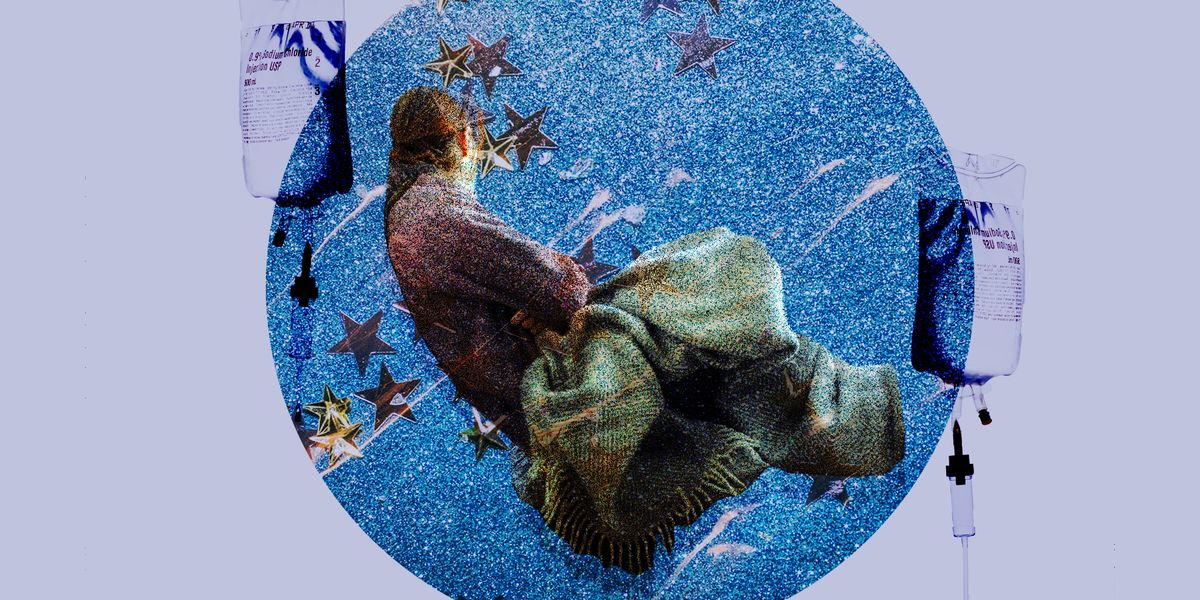Is MDMA the key to treating women with PTSD?
by Kelley McMillan
Some say yes—and that the prescription could come as early as 2021.
On a bright, sunny morning in June 2012, 36-year-old massage therapist Roxxann Murphy and her husband, David, 34, were driving to Oklahoma City's Myriad Botanical Gardens with their 18-month-old daughter, Romy. Almost as soon as David—blond and handsome, with light-blue eyes—turned their Honda Fit onto the highway, they saw a man waving wildly for assistance on the right side of the road. Eager to help, David slowed down and parked the car. It turned out to be a domestic disturbance between the man and his female companion; after making sure the couple was OK, David began walking back toward Murphy, the flat plains framing his athletic build.
Suddenly, a car swerved from the highway at 70 miles per hour, striking David and another man who had stopped to help. Murphy recalls watching the stranger fly through the air upside down. He's not going to survive, she thought. Then she saw David's body roll to a stop in the grass that lined the highway. "David! David!" she screamed, before grabbing Romy from her car seat and running to his side. He was unconscious by the time she reached him, with blood seeping from a deep gash in his forehead and nose. She knelt beside him, gently stroking his head and body with one arm while breast-feeding Romy in the other, the only thing that would soothe her crying daughter. Sunlight streamed down and small crickets hopped over David's body as Murphy begged him not to leave her. An hour later, they were still waiting for an ambulance to arrive.
"I felt him dying," Murphy says. Soon, he was gone.
Immediately after the accident, Murphy began having flashbacks. She jumped at noises. She hallucinated that shadowy, hulking men stood by her bed. She lost 25 pounds and rarely slept; when she did, she dreamed of blood, gore, and body parts. Her waking hours were spent in a zombie-like state. Mostly, she fantasized about bashing her brain with a hammer; but she had to stick around for Romy, which made her resentful.
So a few weeks after David's death, she began seeing a cognitive behavioral therapist at the University of Oklahoma. He diagnosed her with post-traumatic stress disorder, or PTSD, a condition characterized by flashbacks, feelings of hopelessness, and emotional numbing that affects 8 million U.S. adults (81 percent of them women) and can occur when someone experiences a traumatic event like military combat or sexual assault. But even with weekly therapy, Murphy was still suicidal two years after the accident. Desperate for something that would keep her alive for her daughter, she sought out alternative PTSD treatments online, and finally, as a last-ditch effort, took a weeklong trip to Boulder, Colorado, to join a progressive clinical trial that would eventually save her life: a psychotherapy session catalyzed by the hallucinogen MDMA.
Better known by its street names, Molly or Ecstasy, and long viewed as a party drug, 3,4-methylenedioxy- methamphetamine, or MDMA, is currently being studied as a treatment for chronic, treatment-resistant PTSD in four FDA-approved, phase-two clinical studies: in Boulder; Charleston, South Carolina; Vancouver, British Columbia; and Beer Yaakov, Israel (international studies can be used in the FDA-approval process). Over the course of about five months, the trials' 98 subjects, including 54 women, ingest between 75 and 188 milligrams of MDMA during three- to five-day psychotherapy sessions (comparable to a street dose), supplemented by about 20 hours of non-drug-enhanced talk therapy with mental-health professionals. Lauded for its ability to break down emotional barriers, enhance communication skills, and promote deep introspection, the drug acts not as a medication, but as a catalyst to psychotherapy, many times achieving in a few sessions what might take years in traditional therapeutic settings.
Results from an earlier phase-two study in Charleston completed in 2008 (there are three stages for a medication to get FDA approval) showed great promise: After just two sessions of MDMA- assisted psychotherapy, 83 percent of participants no longer qualified for a PTSD diagnosis, compared with only 25 percent who were cured from talk therapy alone. If these current trials are successful, MDMA-assisted psychotherapy may become a prescription treatment for PTSD and radically change how we treat a wide range of psychiatric illnesses, like autism, anxiety, and anorexia.
Though it's frequently associated with war veterans, PTSD is common in civilian women; one in 10 women will experience it in their lifetime, owing, in part, to the fact that women are more likely to suffer sexual trauma, the type of incident that most frequently leads to the disorder. Standard treatments for PTSD include antidepressants and talk therapy, but their efficacy is mediocre at best: In clinical trials, these therapies were ineffective for about 25 to 50 percent of patients.
About two years after David's death, Murphy sat in the bright, airy office of therapist Marcela Ot'alora, the Boulder study's lead investigator, preparing to embark on her first MDMA-assisted psychotherapy session. She was nervous to take the hallucinogen in front of a therapist, especially one she didn't know. Rhythmic drumming played on the stereo in the background. Lit candles adorned a table where Murphy placed a photo of her and David kissing in a field of goldenrod.
Twenty minutes after Murphy swallowed her capsule of MDMA, the drug took hold. Murphy envisioned herself rocketing through the earth's atmosphere toward space, where she came upon David, illuminated like a zodiac drawing among the stars. They spoke about the mundane—her travel hiccups getting from Oklahoma to Boulder—and the profound. She updated him on his family, shared her worries about Romy's future, and expressed anger with him for leaving her to raise their daughter alone. He nodded knowingly and assured her with his big Aw, shucks smile. Then Murphy asked him a question:
"How big are you?" David threw open his arms, which unfurled into wings that stretched across the entirety of the universe. After two years of terror and grief, Murphy finally felt peace.
MDMA-assisted psychotherapy may seem like a novel treatment born of the medical-marijuana age. But this new round of research is, in fact, revisiting old ground. Before it was co-opted by club-goers, MDMA was used by therapists during similar intensive, daylong therapy sessions in the late 1970s and early '80s. California therapist and pioneer of the psychedelic psychotherapy movement Leo Zeff coined it "penicillin for the soul." In 1985, the Drug Enforcement Administration (DEA) classified it as a schedule I substance, along with heroin and LSD—a designation given to "drugs with no currently accepted medical use and a high potential for abuse."
That kicked off years of bad publicity for MDMA, including inaccurate claims that MDMA causes Parkinson's disease and holes in the brain, and permanently damages serotonin reserves. In reality, no studies have shown that clinical usage—that is, taking pure MDMA in moderate doses under medical supervision a limited number of times—leads to long- term cognitive damage, according to Matthew Johnson, associate professor of psychiatry and behavioral sciences at Johns Hopkins Medicine. MDMA has been administered in various studies to more than 1,113 subjects, with only one report of a serious, drug-related adverse event, which ended once the drug wore off. (A subject was admitted to the hospital with an irregular heartbeat and was released the next day.)
Recreational and pharmaceutical MDMA barely resemble each other, however. While the terms MDMA, Ecstasy, and Molly are used interchangeably, Molly or Ecstasy bought on the street is often misrepresented or cut with dangerous adulterants, like methamphetamine, and rarely contains actual MDMA. (Only 9 percent of the Molly the DEA collected in New York state in 2013 contained the pure form of the drug.) And using even pure MDMA in a nonmedical setting, like a club, can be risky: The drug increases blood pressure and heart rate and can cause hyperthermia, or overheating, which can lead to liver, kidney, muscle, and heart failure.
Ranging in age from 23 to 66, the 54 women in the six phase-two studies are mothers, teachers, professional athletes, military veterans, police officers, psychotherapists, and office managers. They have survived combat, rape, physical and sexual torture, and more. Each has taken the DSM-IV Clinician- Administered PTSD scale, or CAPS test, the standard for diagnosing the disorder. (The maximum score is 136; anything above 60 is considered severe PTSD. The average score among the studies' participants is 82.) For these women, participation is oftentimes their final attempt to reclaim their lives.
Rachel Hope, a 43-year-old writer from Los Angeles, endured a troubled childhood: At 4 years old, she was physically and sexually abused, then hit by a truck at age 11, which left her partially paralyzed for a year and requiring four surgeries and years of physical therapy. As a result of the various traumas, Hope suffered from debilitating, treatment-resistant PTSD, which manifested as extreme irritable bowel syndrome (IBS), acute anxiety, night terrors, panic attacks, and insomnia, among other symptoms, and left her malnourished and unable to maintain romantic relationships or to work outside the home.
"It was a monstrous existence," she says. At one point, she was on 15 medications before enrolling in the Charleston study in 2005.
"I was dying," she says of her choice to join the study.
"I had nothing to lose."
Brenda, a 38-year-old teacher from the Denver area, who was physically and sexually tortured by her father from ages 3 to 12, was so clinically depressed from PTSD that she was left suicidal and unable to teach her elementary school classes. She tried 11 medications and was in weekly therapy for 15 years before enrolling in a study. "I entered the Boulder study with a CAPS score of 87, on meds," she says.
"That's bullshit. That's me doing everything I'm supposed to do, everything that these therapists are taught to do in school, and it's not helping." She was wary of using a so-called party drug to treat her condition, but she was was desperate.
"I was really in a fight for my life," Brenda says.
"The fear of the stigma associated with using MDMA was far less than the fear of continuing to feel the PTSD symptoms for the rest of my life."
The sessions are not high-flying, blissed-out psychedelic drug trips, but intense feelings of "connection," or love for oneself and others, do pervade the experience.
"My husband and I have been married 17 years, and it was the first time I understood how much he must love me and how I deserve that love," explains Brenda, who says MDMA opened up a world of new emotions for her.
"I was able to feel. I think that's the biggest takeaway. While on the MDMA, I had access to feelings that I hadn't ever had access to before." The drug, which lasts three to six hours, produces an objective state in which one is able to revisit difficult emotions and experiences, and able to do so without being overwhelmed by them.
"I was terrified a lot of the time. I was reliving it," says Murphy, who regularly went back to the scene of the trauma.
"I actually saw all of the accident, but it didn't overwhelm me because I was outside of it somehow."
This sense of peace is typical of the MDMA sessions.
"Instead of feeling hyperaroused or overstimulated, I felt a tremendous calm and had reduced anxiety," says Hope. Despite the enhanced sensory perception that is a hallmark of the psychedelic experience (things like light appearing more crystalline, the sensation of air currents wafting over skin), participants are extremely focused on the task at hand: healing.
"Even though MDMA is a psychedelic, I didn't feel like I was tripping," says Hope. "I didn't feel fucked up. I felt really empowered, like I could direct my mind where I needed to."
There's a chemical explanation for all of this. MDMA triggers a massive release of serotonin, a neurotransmitter critical to mood regulation; dopamine, which modulates emotional response; and oxytocin, the hormone of bonding, trust, and intimacy.
"Patients are awake, alert, connected. They want to talk. They want to explore. They feel calm enough and their fear is extinguished enough that they can actually process the trauma," says psychiatrist Dr. Julie Holland, author of Ecstasy: The Complete Guide: A Comprehensive Look at the Risks and Benefits of MDMA.
"You basically couldn't design a molecule that is better for therapy than MDMA."
MRI brain scans suggest that one way MDMA works is by decreasing activity in the amygdala, the brain's fear center, while increasing activity in the prefrontal cortex, regions associated with memory and higher functioning. In the PTSD brain, activities in these areas are out of balance. Researchers believe MDMA's effects on the amygdala and prefrontal cortex allow people to understand a trauma without being overwhelmed by negative emotions.
"It's almost like anesthesia for surgery," says Holland.
"It allows you to dig and get to the malignant thing that needs to be pulled out and examined. It takes years in psychotherapy to dig around the trauma and start to get to it. This is a way for people to process the core issue in order to move forward."
Accessing traumatic memories allows patients to re-remember them, a process called memory reconsolidation, in which memories can be changed if they are reactivated and updated with new information.
"You're actually manipulating that memory, and when it gets stored again, what's stored again is a little different than what you pulled out," says Johnson. This is key for people with PTSD, whose brains haven't properly worked through trauma.
"I felt as if I was literally reprogramming my brain and confronting all of the fixed thought patterns and belief structures that were keeping the PTSD in place, that were making me relive the past over and over again. I was able to file those memories in the past," says Hope.
From June through October 2014, Murphy underwent three 8-hour MDMA treatments. After her first session, her sleep improved. After her second, she stopped wanting to kill herself; her flashbacks began to subside.
"It felt like burdens were lifted off my shoulders," Murphy says. By the end of her participation in the study, her CAPS score had fallen from 114 to 37, meaning she no longer qualified for a PTSD diagnosis.
"It saved me," she says of the treatment.
"It delivered me back to my good life and delivered my daughter her mother."
Brenda also credits MDMA-assisted psychotherapy with saving her life.
"I spent 35 years suicidal, and I'm not anymore, because of the MDMA and two really skilled therapists," she says. She is now off all her medications and teaching full-time again for the first time in seven years.
"I'm the healthiest I've ever been, because I have so much clarity." And more than 10 years after enrolling in the first study in Charleston, Hope says she is still cured of PTSD and has not suffered IBS, flashbacks, or night terrors since her first MDMA session.
Whereas psychiatric medications such as Zoloft try to address so-called biological imbalances, they act as a temporary Band-Aid to suffering, say researchers. MDMA may heal it altogether. And MDMA may be safer than psychiatric medications, in part because you don't have to take it every day.
"If used carefully, it could be safer simply because your side effects are time-limited," says Johnson. Zoloft and Paxil, traditional treatments for PTSD, can cause weight gain, sexual dysfunction, and suicidal thoughts, whereas a single dose of medical-grade MDMA may only cause increases in heart rate and blood pressure during the session, and fatigue, loss of appetite, and low mood for a day or so afterward. For people like Murphy, Brenda, and Hope, the insights and emotional shifts gleaned from their MDMA sessions have profoundly changed their lives. Brenda says,
"It's really like stepping outside into a whole new world and breathing fresh air."
MDMA research has helped pave the way for psychiatry's current psychedelic resurgence. Scientists at Johns Hopkins, Imperial College London, and the University of New Mexico are studying LSD and psilocybin, the psychoactive compound in magic mushrooms, as antidotes to addiction, anxiety, depression, and more. In the future, MDMA researchers hope to see the no-longer-experimental treatment administered by specially trained and licensed therapists in mental health clinics around the globe.
But Bertha Madras, Ph.D., a professor of psychobiology at Harvard Medical School, fears that legalizing MDMA for medical use is just the first step in decriminalizing serious drugs in the United States.
"The illicit hallucinogens MDMA, LSD, and psilocybin are the next wave of drugs being promoted as 'medicines,' with the long-term view of normalizing their use for psychoactive purposes," she says.
"At present, there is insufficient evidence to support the use of MDMA for therapeutic purposes." Dr. Joseph Lee, medical director of Hazelden Betty Ford Foundation Youth Continuum, a rehab facility in Minnesota, believes MDMA may have therapeutic properties but worries about the greater ramifications of legalizing MDMA-assisted psychotherapy.
"My concern is that somehow this conversation about researching MDMA for PTSD will bleed into people justifying recreational use or minimizing misuse. We've seen that happen with prescription drugs," says Lee. He also cautions against overuse of MDMA.
"We routinely see kids every year who used too much MDMA or for whatever reason had a side effect from the MDMA and needed to be psychiatrically hospitalized before coming to treatment," he says, touching on another concern of MDMA— that it may trigger latent psychiatric issues. (Prospective participants for the MDMA-assisted psychotherapy trials are screened for any psychological issues—like bipolar disorder and schizophrenia—that may be of concern.)
One of the biggest obstacles standing in the way of developing MDMA into an FDA-approved medication is funding. The process is a $20 million endeavor and one that relies completely on the fundraising efforts of MAPS, the Multidisciplinary Association for Psychedelic Studies, a nonprofit research and educational organization that studies and develops therapeutic applications for psychedelic drugs—partly because pharmaceutical companies have little interest in developing a drug administered only a few times. In 2016, MAPS will move MDMA-assisted psychotherapy one step closer to legalization when it begins phase-three clinical trials, which will involve more than 400 participants and last five years. If those trials are successful, psychiatrists may be prescribing the treatment by 2021.
In the meantime, MDMA has caught the attention of those at the highest levels of the military; 22 veterans per day commit suicide. The National Center for PTSD, in the Department of Veterans Affairs, has been consulting with MAPS concerning an upcoming study, which will look at MDMA-assisted couples therapy involving veterans and top VA-affiliated psychologists, and will begin at the end of this year. Based on the results, Rick Doblin, MAPS founder and executive director, is hopeful the Department of Defense may fund further studies and allow MAPS to work with active-duty soldiers.
Today, Murphy lives with Romy on a quiet street in Norman, Oklahoma, and is thriving. In June, she traveled to Northern California, where she lived with David for two years, to scatter his ashes at Muir Woods, a stretch of lush redwood forest near the Pacific that they frequented and loved. She brought along her new boyfriend, who, coincidentally, is also named David; they met after Murphy's second MDMA-assisted psychotherapy session. They are talking about a life together, something she never could have imagined before the experimental treatment. For the first time in years, she is hopeful about what lies ahead.
"I'm able to make a life for us now, and he's right here with me," she says of her late husband.
"I feel blessed that I ever got to be with him in the first place." Some days, when she's out in her yard with Romy, a bird will fly by and Murphy will reach up to the sky and say,
"Daddy's birds." Her daughter smiles, knowing her father is close by, and, at long last, so does Murphy.
"It's still sad," she says.
"But I can access those memories, and see him in my daughter, and I rejoice in it."
https://www.marieclaire.com/health-fitness/news/a15553/mdma-ecstasy-drug-ptsd-treatment/

